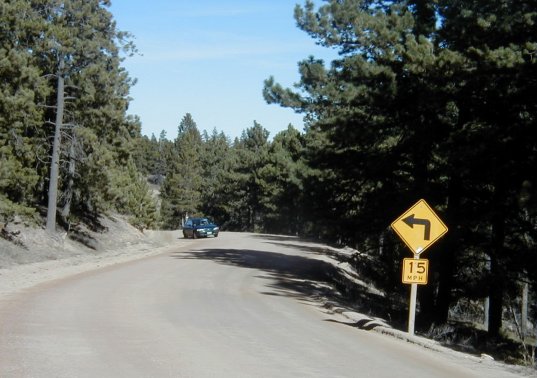


A brief analysis of data provided by the Colorado State Patrol (CSP) regarding accidents on Magnolia Road and vicinity, dating from 1990 to September 1997 is summarized below. Detailed information is found in Appendix 9.3
There were 109 accidents on or near Magnolia Road recorded by the CSP over the last 7 years (approximately 15 per year). Speeding was cited far more often than any other cause (40%). The next most numerous cause cited was "inattention to driving" (23%). Of note were seven DUIs, seven defective vehicles, and six "wrong side of road" listed as causes. The citations issued recorded 45 cases of "careless driving" (speeding) and 13 instances of "improper mountain driving". Only one accident was listed as "animal caused". There were no fatalities and only three serious injury accidents. Three-quarters of the accidents have involved a single vehicle, typically driving off the road at a curve. Approximately 75% of accidents along Magnolia Road are one-car accidents, the balance involve two vehicles.
Notably, 39% of accidents occurred at the junction of the Peak-to-Peak Highway and Magnolia Road. CSP data does not detail whether these drivers were entering or leaving Magnolia Road, but it is evident that this intersection needs great care and attention from all drivers. Only two other specific locations warrant special attention. Eleven accidents (10%) occurred at "Dead Man's Curve", well known and, incidentally, well marked with a warning for 15 mph (Figure 9.3). The next most common location was at Mile 5, a slight curve near Twin Sisters intersection (8%).
Based upon these statistics, the unpaved portion of Magnolia Road is comparatively more dangerous on a per-mile basis than the paved portion. However these data do not provide a clear analysis of this issue for the following reasons:
 |
| Figure 9.3 “Dead Man’s Curve” on Magnolia Road accounted for many accidents, mainly because of poor banking. |
 |
 |